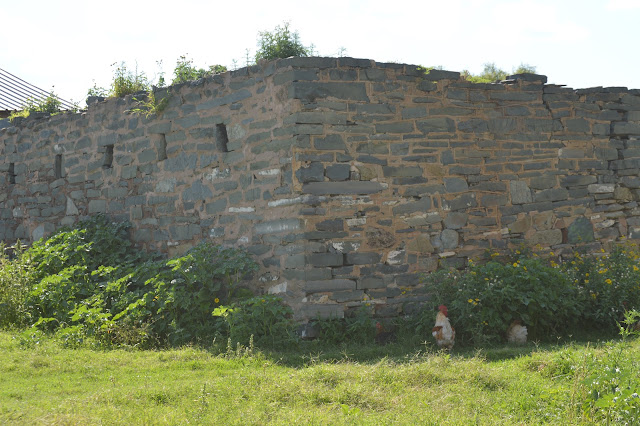The Salt pans at Stella
Thanks to the Tammy and Liz from Lucky Star Ranch
To start the Lonely Hill Stoepstorie I have to go back to an extract from the book
MEN OF THE TIMES.
. . . . Alfred Ernest Fincham is yet another of the sons of South African soil of whom we have the pleasure in writing this small sketch. He was born in the year 1869 at the Grange in the Herbert District and is a son of the late Mr. John Thornton Fincham, framer and general merchant of the district. Mr. A E Fincham's education as principally conducted in Herbert and at the finish of his curriculum he commenced business in one of his father’s branch stores, which he ultimately managed. In 1870 he gave up the business in those parts and proceeding northwards to Vryburg. Bechuanaland where he assisted in establishing the firm of Fincham and Sons being a partner in same until 1899, when he sold out his interest to take up farming in the Mafeking District, purchasing a block of farms of at Ramathlabama. Mr. Fincham was one of the defenders in the siege of Mafeking, belonging to the Town Guard, manning De Kock’s Corner Fort through the siege. When the siege was raised he returned to farm life, and subsequently commence business again, establishing the firm of A W and A E Fincham, general merchants, Mafeking, which he now controls, at the same time looking after his farming interests, giving attention chiefly to raising both large and small stock. Mr. Fincham has been a member of the Mafeking Divisional Council since 1899, and in 1900 was elected a member of the Town Council, serving as such through 1902 – 1903 and re-elected in 1905, being a Councilor at present. As may be understood he takes a keen and energetic interest in the welfare of the town, and for his sympathetic personality and public services, he has earned the highest esteem of his fellow townsmen. He married Elizabeth Ellen West, the daughter of Henry and Elizabeth West of Beaconsfield and had four children . . .
Alfred and Elizabeth Ellen four children:
Louisa Elizabeth Smith (nee Fincham) married to Tom Smith
Mary Amelia Webster (nee Fincham) married to Albert Earnest Webster
Ada Ethel Rex (nee Fincham) married to George Henry
Victor Baden Fincham (my grandfather) married to Hester Cecilia Gauche.
Victor was born on 6 June 1900 during the Siege of Mafeking (Anglo Boer War) in an underground tunnel.
The Siege lasted for 217 days.
 |
| Alfred Ernest and Elizabeth Ellen |
The cattle on the farm in Ramathlabama contracted foot-and-mouth diseases. Alfred and Elizabeth moved to a new location - to the farm known as Biesiebult. Biesiesbult is now known as the town of Stella. As they reached the end of the road, Mary made commented, such a lonely hill. The part of the farm at the foot of the hill was then named Lonely Hill.
This farm was situated next to the Salt pan. The salt pan was mentioned by David Livingston and Robert Moffat in their memories from the area.
 | |
| Hennie and Heather on the walk to the salt pan |
You can read more on Heather's visit here 10SouthAfricanTown
 | |
| Great-grandfather then started the mining of salt. To get the salt to the customers they need for transportation was urgently required. The railroad at Kameelbult was the obvious choice. |
The railroad between Vryburg and Mafeking was first built in 1894, part of Cecil John Rhodes dream to build a railway from the Cape to Cairo. This project would run through my great-grandfathers' farm known as Kameelbult. The stop was named Kameel. Salt was brought in, with donkey wagons to Kameel where it was then loaded onto the railroad tracks. In those years it was a wooden and pole building. Later on, a corrugated iron building was put up. Only in the early 1930’s was a permanent building built.
The following extract from the book:
Gun and camera in Southern Africa; a year of wanderings in Bechuanaland, the Kalahari Desert, and the Lake River country, Ngamiland.
By Bryden, H. A. (Henry Anderson), 1854-1937
There had been heavy summer rains for some days, during which Vryburg had become a quagmire, and the inhabitants waded forlornly about, as is their custom, in “field” boots, top Idiots, mackintoshes, and any other gear calculated to withstand the swamps, holes, and " sluits," that everywhere abounded. We waited till 3.30 p.m. and then set forth in a Cape cart under a lowering, stormy sky. Two hours and a half of heavy travelling brought us to Fincham's, a farm and accommodation house fifty miles out, where we out spanned. Our horses were put up and we were offered such shelter as could they have given us for the night.
Lonely Hill's house is still there today. It has known better day but it was with a feeling longs that we stood on the land known as Lonely Hill at the foot of the little hill next to the salt pan.
 |
| The door leading to the Salt pan. You can see the stone that was used to build the house. This stone was hauled from the banks of the salt pan |
 |
| Hennie is taking a look out of the window to the porch |
 |
| The out-building built from the same stone that was hauled in from the salt pan. |
 |
| A lot of nostalgics when visiting Lonely Hill |
There is still some of the ruins of stone building from the salt pan's stone in the town known as Stella
 |
| The old church that is now the workshop of the municipality |
Till next time
Sandra
Please note that Lonely Hill is situated on private land and is not open to the public.




























